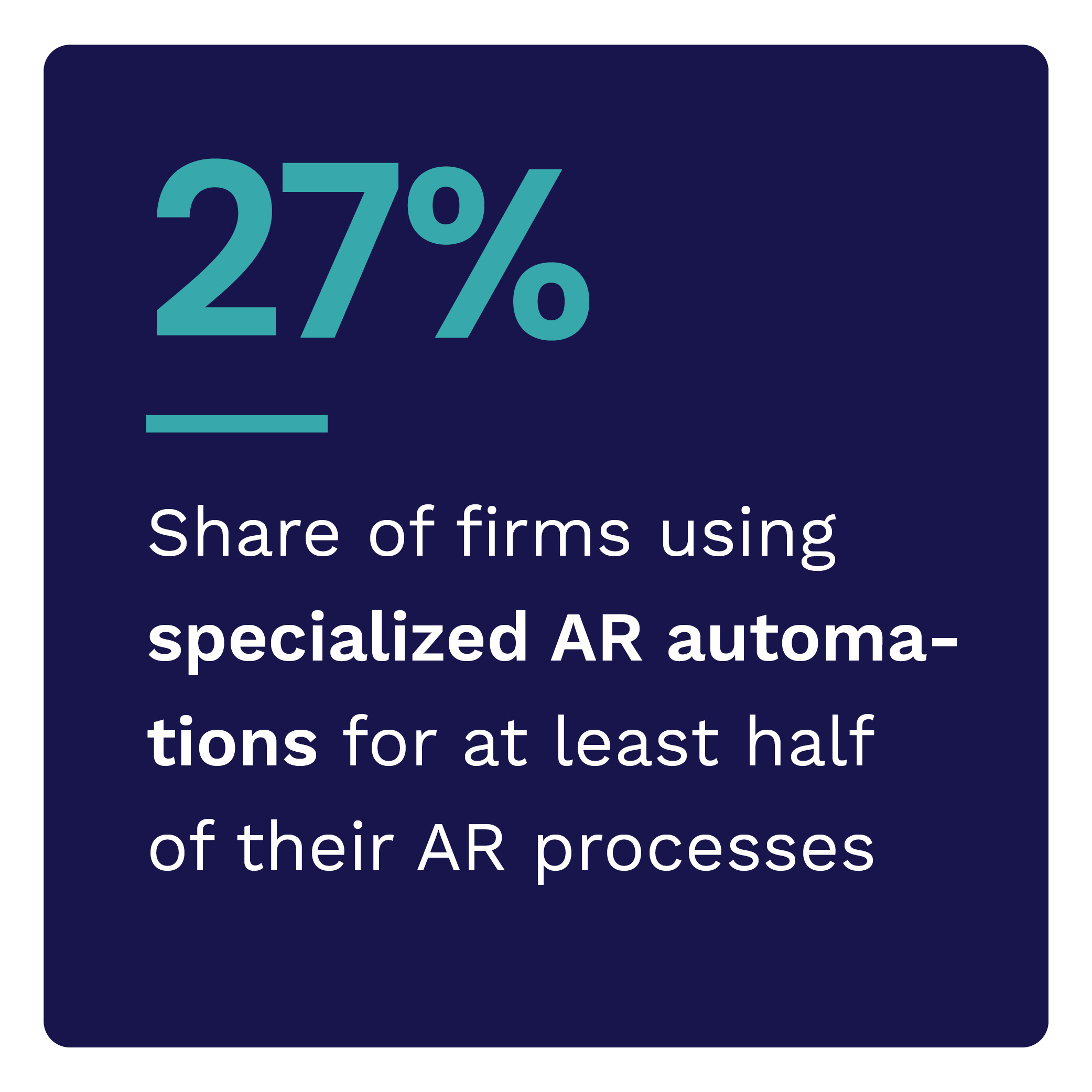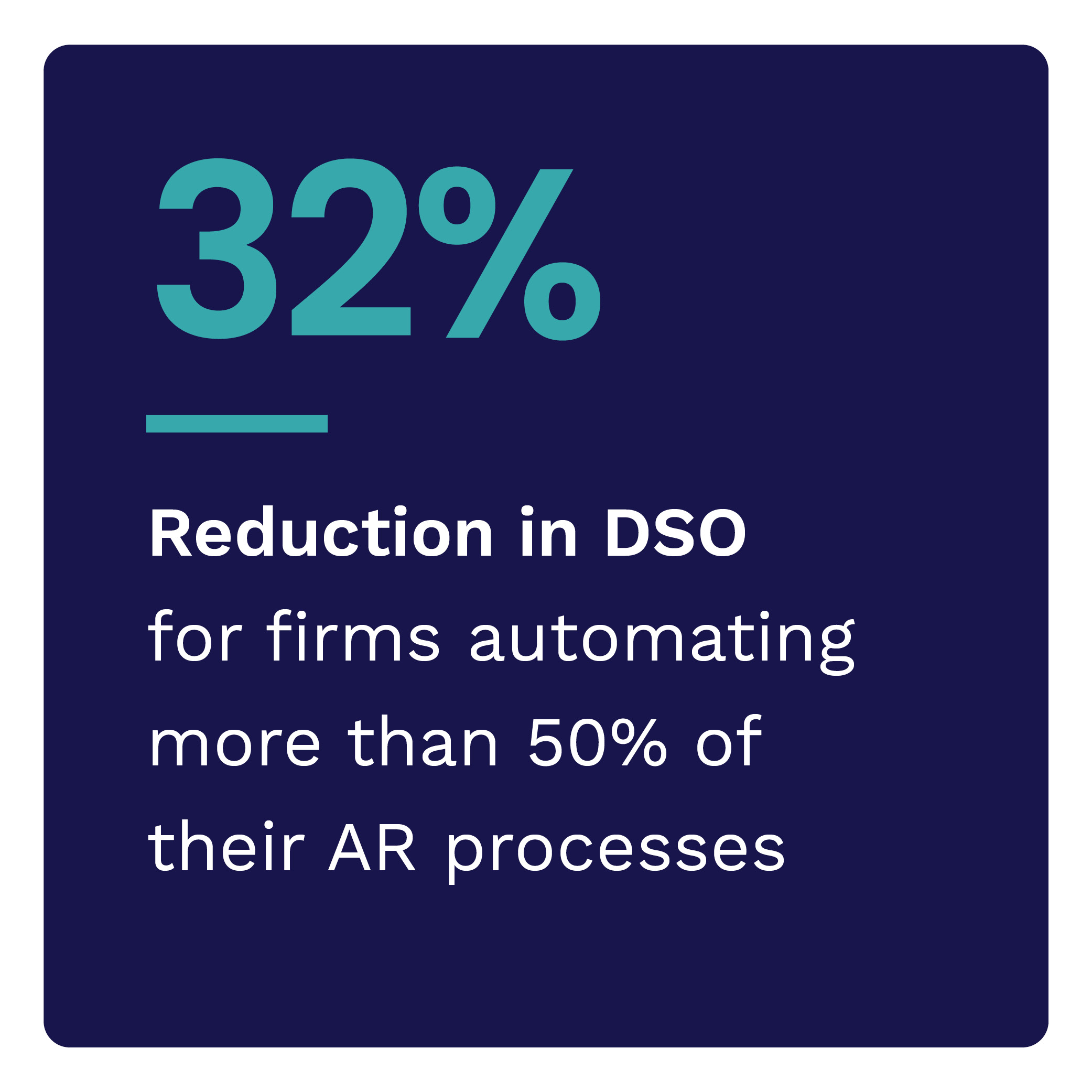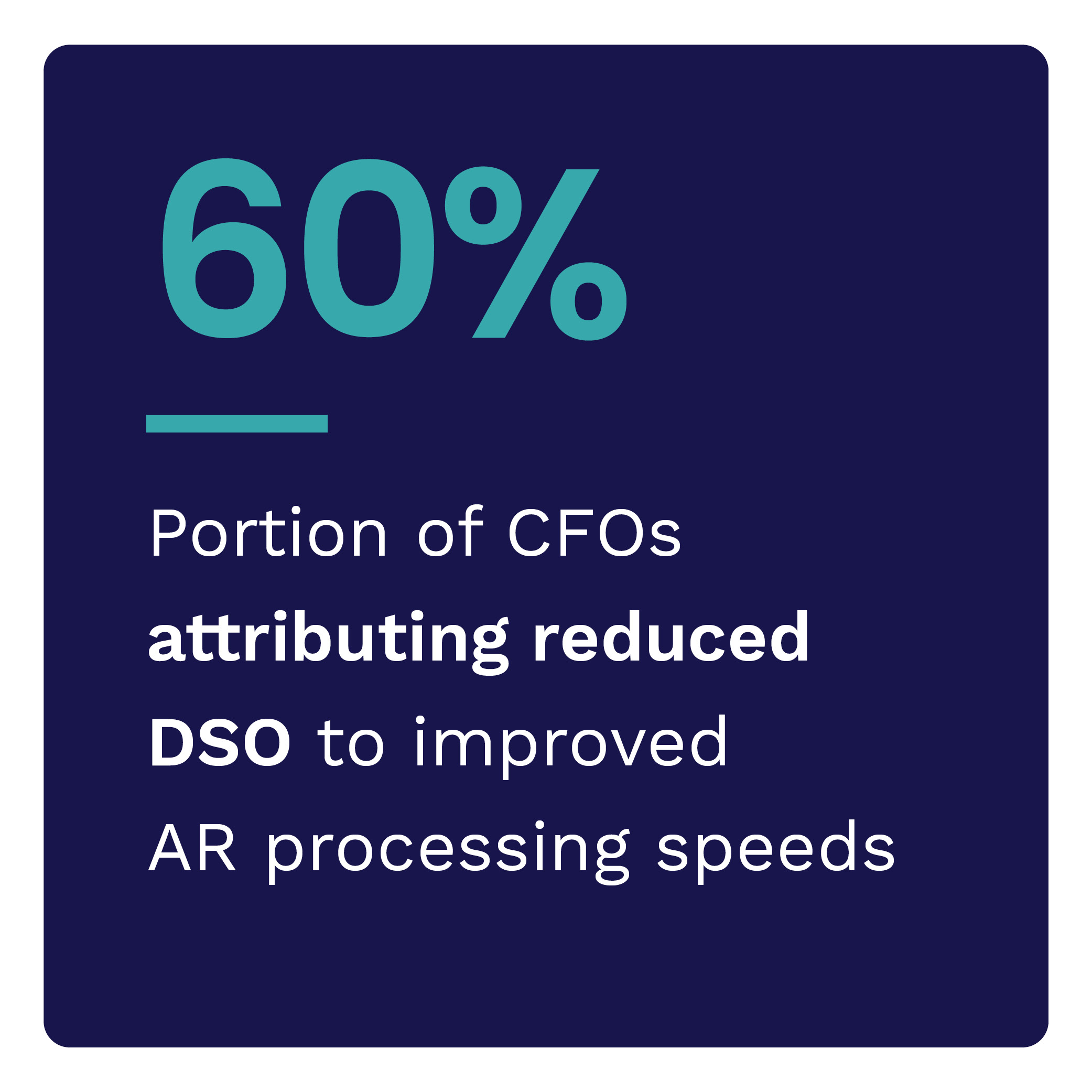Only 17% of Small Firms Are Reaping Benefits of Automating Accounts Receivables
Accounts receivable (AR) automation is transforming corporate finance operations by providing enhanced efficiency, speed and accuracy in payments handling. However, the adoption of AR automation is still in its infancy despite the clear advantages.
PYMNTS’ latest study identifies a compelling link between AR automation and significantly reduced days sales outstanding (DSO), particularly for larger firms generating more than $1.5 billion in revenue. This data is a wake-up call for smaller businesses lagging in AR automation adoption. With larger competitors already harnessing the technology, smaller enterprises must explore how they can integrate AR automation to remain competitive.
These are some of the key findings in “How Automations Reduce Receivables Delays,” a PYMNTS and Corcentric collaboration. Our findings are based on a survey of 100 chief financial officers of United States-based firms across 13 industry segments generating $250 million or more in annual revenues conducted between April 11 and April 26. We examined the evolving landscape of specialized AR automation adoption and its effects on businesses to show how it impacts DSO and operation efficiency.
 Other key findings from the report include the following:
Other key findings from the report include the following:
AR Automation’s Role in Cash Flow Management
Larger firms, especially those with more than $1.5 billion in revenue, are capitalizing on AR automation for better payments handling and cash flow management. Thirty-seven percent of these firms have adopted specialized AR automation for at least 50% of their AR processes, compared to just 17% of firms with revenues between $250 million and $750 million. Most companies that have automated at least 50% of their AR processes expressed satisfaction with the outcomes.
Trimming DSO With AR Automation
Companies that have adopted specialized AR automation for more than 50% of their processes reported a 32% reduction in DSO — the equivalent of 19 days. Additionally, 85% of CFOs at businesses with more than half of their AR processes automated cited a decrease in DSO. For firms with less than 50% of their AR workflows automated, 67% cited a decrease.
Improved Processing Speed and Reduced Errors
Sixty percent of CFOs at highly automated firms said improved processing speeds and real-time updates were crucial for reducing their DSO. Sixty-three percent credited automation for fewer invoicing errors. However, firms cited complexities and lack of on-call advisory services in AR automation as barriers to success. Most CFOs said excessive complexity in automated AR workflows hampered their efforts to reduce DSO.
To capitalize on its potential, CFOs must focus on ease of use and reliability when automating AR processes. Download the report to learn more about how AR automation can help both large and small businesses.
